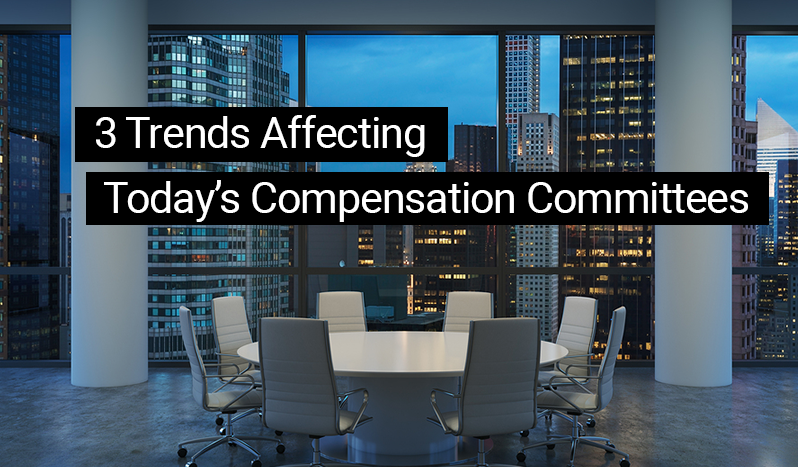“Compensation committees are the new audit committees.” This light-hearted comparison has become increasingly justified as regulations like Dodd-Frank and Say on Pay have sharpened the focus on today’s compensation strategies and committee members.
Executive and board compensation has remained a salient topic on Inside America’s Boardrooms, as we’ve welcomed various guests to discuss compensation committee trends and best practices. In this article, we’re highlighting our discussion with Jim Curtiss, who has chaired the compensation committee at Cameco Corporation for over a decade. Given his tenure, Curtiss offers a unique perspective as to how compensation committee agendas have evolved over time, particularly within the last few years.
1. Greater emphasis on transparency.
Greater transparency is being demanded of today’s compensation committees—not just in the context of Say on Pay, but transparency as it relates to the board’s compensation strategy.
“Shareholders want to know how you approach compensation issues,” said Curtiss. “Compensation issues involve a lot of judgement, and everyone wants to express a view on that in one way or the other.”
In our recent episode with seasoned director Phoebe Wood, she explained that sometimes it’s harder to get alignment around the compensation strategy itself than it is to get approval for the actual compensation package. Critiques of compensation strategies (heightened by media coverage) will only become more prevalent now that Dodd-Frank’s Pay Ratio Disclosure has gone into effect.
2. Greater scrutiny of the CD&A.
As an extension of the point above, the Compensation Discussion & Analysis (CD&A) will continue to be placed under greater scrutiny in the months ahead. Beyond its required inclusion in the proxy statement, investors are looking to the CD&A for a narrative—one that tells the story surrounding a company’s compensation package.
“[Investors] want to see how pay-for-performance is approached,” said Curtiss. “They want to see how you’re compensating your executive team, particularly the CEO. There’s a real emphasis on trying to explain that in a plain-English way.”
In a recent episode, Donnelley Financial Solutions’ Ron Schneider emphasized the importance of the CD&A, particularly now that more and more shareholders are using proxy info to make investing decisions.
“The CD&A executive summary is probably the first destination for most investors,” said Schneider. “Written well, it may be their only destination.”
CD&A disclosure serves as a storytelling roadmap for compensation committees. Particularly important is the explanation that links compensation and performance, as mandated by Say on Pay.
3. Greater oversight from proxy advisors.
Proxy advisors like ISS and Glass Lewis play an increasingly important role in shaping investor perceptions. For this reason, Curtiss explains, it’s just as important for compensation committees to outline what they do not support when it comes to their compensation philosophy.
“There are red flags that we have all come to learn about over the years,” said Curtiss. “Things [like repricing options] that, as we explain in our CD&A at Cameco, we just don’t do.”
Compensation committees should outline within their CD&A disclosures the things they will not do—particularly as it relates to their compensation philosophy and principles. Again, we arrive at this idea of a “compensation narrative,” which weaves together all elements of a compensation strategy with both clarity and purpose.
For more information, don’t miss Phoebe Wood’s episode below, “Why Today’s Compensation Committees Must Have Thick Skin.”





